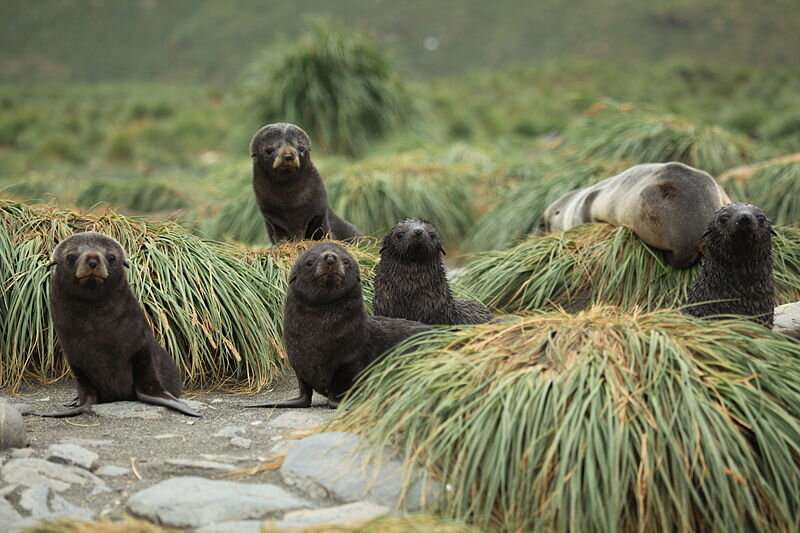
Antarctic fur seals that were hunted to near extinction have recovered but now face dangerous decline because of a lack of food, new research suggests.
The study of fur seals, almost all of which live on the sub-Antarctic islands of South Georgia, shows that the modern-day population peaked in 2009 at about 3.5 million—a healthy number, although significantly less than previously estimated. But a more detailed count of animals living on a particular South Georgia island called Bird Island also shows the seals are finding it harder to find krill—a small shrimp-like crustacean—with numbers crashing in the last decade.
Fur seal populations at Bird Island, a well-studied location in the northwest of South Georgia, showed among the fastest rebounds over the last century or so. But the new survey identified a worrying reversal: numbers peaked in 2009 and have declined by 7% each year since. That takes the island’s current population down to a level not seen since the 1970s, when the population was still recovering.
Scientists looked for evidence of krill fishing pressure on fur seal population dynamics, but this was not found to be significant. However, initial analysis of climate data shows that that rapidly rising sea temperatures in the region correlate with the seal population decline—pointing to a loss of krill as the most likely cause.
“Krill can make up to 80% or more of the diet of fur seals at South Georgia, so they experience catastrophic declines in the number of pups produced and survival of individuals when environmental conditions remove the krill from their immediate foraging areas,”